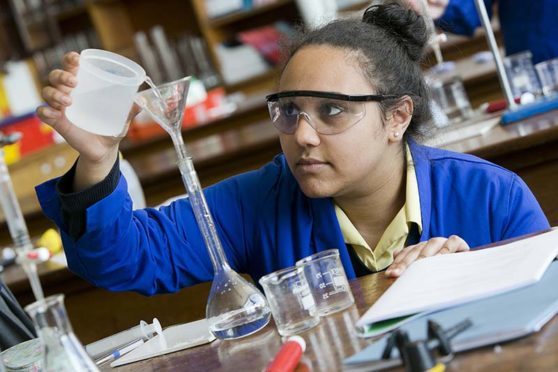Anna Tomlinson, headteacher at St Margaret’s School for Girls explains ways to address gender stereotypes around STEM subjects and careers.
A recent study, ‘Gender stereotypes about intellectual ability emerge early and influence children’s interests’ revealed that by the age of six, girls were already less likely than boys to describe their own gender as ‘brilliant’ and less likely to join an activity identified as being for ‘very, very smart’ kids.
Research continues to tell us that children are strongly influenced in the development of their self-identity by stereotypes learnt at home and in society, and that these are reinforced by images and roles depicted in the media.
We may now have our second female Prime Minister and a female First Minister, but the reality is still that men outnumber women in professions such as engineering and technology, in the financial sector and in the boardroom. Furthermore, they still get paid more for the same work.
We have long recognised that such stereotypes exist around STEM (Science, Technology, Engineering and Maths) subjects and careers, but how do we change this? How do we deconstruct those stereotypes in a way that is really meaningful for girls?
Introduce role models
We cannot underestimate the impact of real-life role models on raising aspirations and breaking down misconceptions about the sort of women who thrive in a STEM career.
Women have undoubtedly been ‘hidden figures’ in STEM history and making accomplished women scientists and engineers visible is essential to inspiring the next generation of scientific success.
A recent competition run by St Margaret’s to name our new laboratories after famous female scientists led to visits by astrophysicist, Professor Dame Jocelyn Bell Burnell, and forensic anthropologist, Professor Dame Sue Black, whose own personal stories undoubtedly inspired the next generation of female scientists.
Get girls into the workplace
A good place to meet those role models is in the workplace. At school, pupils don’t always make links between curriculum knowledge and their future careers and it is when girls have the opportunity to relate to women in the workplace that they can properly understand the diversity of career opportunities in STEM.
Embrace opportunities
Many industries and companies are developing exciting opportunities for girls to explore careers and are very willing to visit schools and engage with pupils. It is only by working together with colleges, universities, industries and business that in school we can tailor what we do to meet the needs of girls and their future careers.
Over the past two years, St Margaret’s has developed a fruitful partnership with the School of Engineering at the University of Aberdeen.
Working together has given us the confidence to be innovative in our approach to promoting engineering to girls, and we are now holding a national residential ‘Women in Engineering’ conference at the University from July 30 – August 1, which is sponsored by Chevron.
More than 40 girls from schools throughout the UK will take part in the highly interactive programme, which will be rich with hands-on activities and face to face contact with female engineers.
Our intention is that we will not only redress any misconceptions about the engineering industry, but that we will inspire the next generation of female engineers.

Turn STEM into STEAM
To mark a clear distinction between the arts and the sciences is a false dichotomy. The skills of self-expression, verbal dexterity and visual creativity so strongly promoted through languages, social sciences, art and design and the performing arts are of immense value to any budding mathematician, scientist or engineer.
An interdisciplinary approach broadens the appeal and acknowledges the happy synthesis of arts and sciences in the creative process.
Get parents on board
As educators it is crucial that we share with parents our vision for girls in STEAM and tell the story of the school’s progress and initiatives in this area.
Not only does this raise awareness and challenge stereotypes where they exist, but it can also generate new opportunities for the school through parents’ own contacts.
Preparation for life beyond school
For the best part of 20 years, I have taught in Scottish girls’ schools, learning environments quite different to my own co-educational schooling in Lancashire.
Now, as a headteacher, I am frequently asked about the benefits of a single-sex school – my response is always that in an all-girls’ school there is no such thing as a girl’s subject or a boy’s subject. Girls are free to follow their own interests and aptitudes.
At St Margaret’s, we have the advantage of being able to design every aspect of our academic, pastoral and extra-curricular provision to meet the needs of girls at their different developmental stages.
Single-sex schools give girls the courage and opportunity to develop a strong sense of self in an environment free from stereotype or gender-weighted expectation.
For more information, visit St Margaret’s website.

